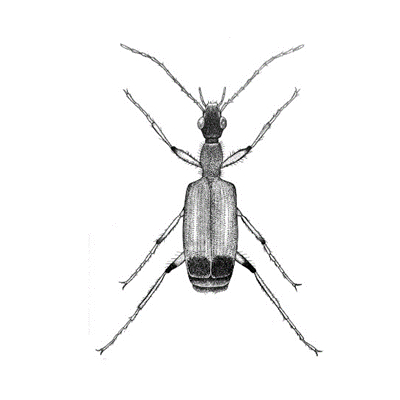Key to Order Coleoptera
E. A. Heinrichs
Lincoln, Nebraska
Updated: January 2022

About
There are many beetle species, consisting of at least 13 families, that attack rice plants in West Africa. They are primarily foliage feeders attacking rice in the vegetative stage. Some species mechanically transmit the Rice Yellow Mottle Virus (RYMV). The major coleopterans are the blister beetles (Meloidae), and the Hispidae, (Trichispa sericea, Dactylispa spp. and Dicladispa viridicyanea). Hispid larvae mine within the leaves while the adults feed externally on the leaves.
Beetle identification requires familiarity with antennal shapes, tarsi, (formulas, shapes of segments) mouthparts (labial and maxillary palpi), ventral characters (sterna, pleura, coxae), and other morphological characters. They have chewing mouthparts (sometimes located at the tip of a beak or snout); the front wings (elytra) are hard and serve as covers for the hind wings; the elytra meet in a line down the middle of the back; the hind wings are large and membranous, folded beneath the elytra; and the tarsi are 2- to 5-segmented. The hispids are easily recognized by the spines extending laterally from the pronotum and from the hardened forewings (elytra).